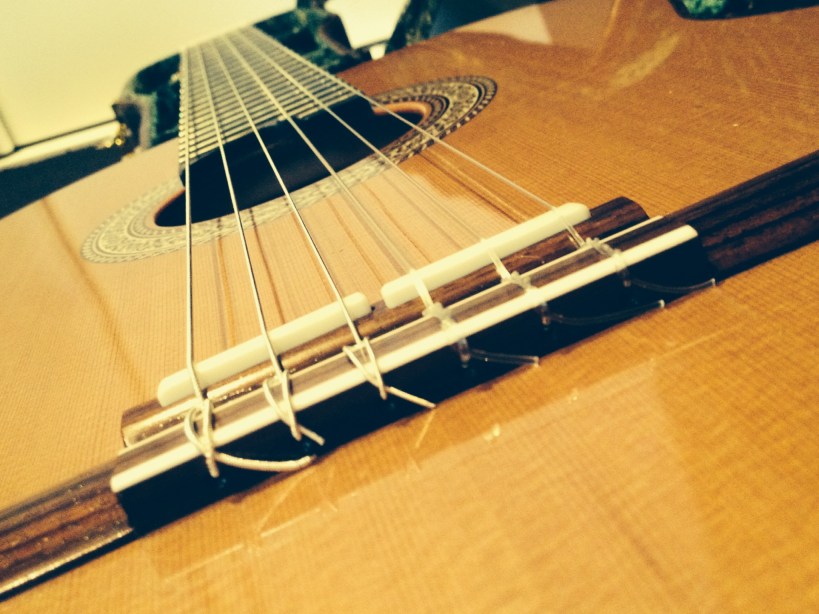
I thought I’d share with you some brief thoughts today on an observation I’ve had in recent days.
In the last couple of months or so I’ve been practicing, working out niggles and challenging little transitions and fingerings and generally burnishing up a piece of music that I had originally learnt to about a 90% level a couple of years ago. The piece is the Fugue from Bach’s Lute Suite in A Minor BWV 997, the second movement from the Lute Suite that I’m aiming to have learnt to play in its entirety this year.
And the observation I’ve made in the last few weeks of getting to real grips with the piece again and really getting it under my skin, is that whilst I’m continuing to use the music when practicing and playing it I’m not “reading” the sheet music as such.
I’ve definitely not got the music embedded in memory for playing with out the sheet music – I’ve tested that. I get so far, but there are still big holes in the memory.
When I play the piece, with the sheet music, it feels a little like reading words in a book (or a blog site!). When we read words on a page we don’t tend to read every single letter, we recognise the shapes of words and collections of words. So I feel it’s a little like that – not having memorised the music but recognising and having embedded the shapes and sounds and flow of the piece, not reading every single note or chord, yet still relying on the shapes on the page, connecting the shapes on the page with the movements of my left and right hands and fingers.
I find it an interesting observation, and perhaps a step that I’d not been really mindful of before in really learning a piece of music.
Hi, I just had to comment because I ran into this same observation in a wonderful little book called The Inner Game of Music by Barry Green, there presented as a sight-reading aid. The book, in brief, is about how to deal with various mental and emotional obstacles common in music practice and performance. It might be relevant to your book project as well, as it also deals with the relationship between psychic and physical tension and relaxation. It doesn’t focus on any one instrument (anyway, I feel guitarists especially could benefit from observing other instrument practices).
Just recently found your blog (via a feedly search for ‘classical guitar’ FYI); starting to catch up and plan to follow it. Good luck with the book, and with getting back up to speed playing with a better approach, and thanks for sharing!
Hi Robert
Thanks for your comment.
That’s very interesting – I have that book in my collection having read it a few years ago. I must dig it out and have a re-read now. Thanks for that!
And yes, I find cross-pollination from other instrumental practice, particularly piano which I also play, is very beneficial.
Thanks again and Happy New Year!
Nicole
Oh, interesting! I have only basic tutelage on a few other instruments, but I feel I have the most to learn from pianists and cellists. If you haven’t already, I hope you’ll consider writing about the ways in which piano practice benefits and informs your guitar technique and approach. I see you’ve discussed musical cross-pollination before, but so far I haven’t found articles explicitly addressing the physical/mechanical benefits (and/or problems?).
Happy New Year to you, too!
P.S. The above was meant to be a reply to your reply to my earlier comment. Sorry for any confusion!